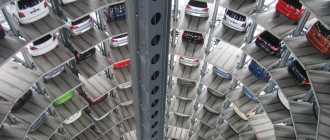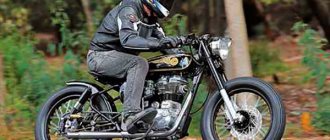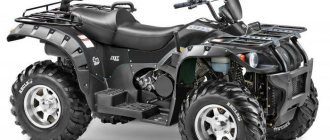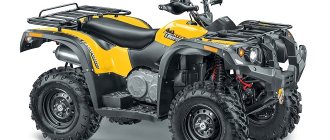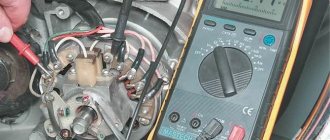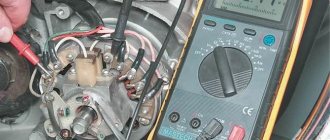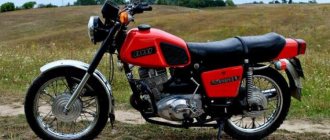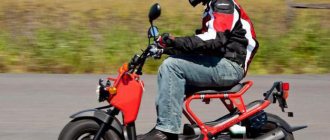When buying a car, one of the key criteria is where it is assembled. Many parameters depend on this - the level of adaptation to local roads, quality and even technical characteristics of the vehicle.
With increasing demand, large manufacturers are opening factories in many countries around the world.
The South Korean company KIA, which has a wide geography of factories, is no exception.
Where are cars of this brand made? Where do cars come to the Russian market from?
General information about KIA
Kia Motors Corporation is a South Korean brand, which ranks second in size in South Korea and is one of the ten largest companies in the world.
The year of foundation is considered to be 1944, when the new enterprise became part of the Kia Group. Full separation into an individual unit took place in 2003.
At first the company was called KyungSung Precision Industry, and only in 1951 it was renamed KIA Industries.
The initial direction of work of the newly created structure is the production of two-wheeled vehicles (motorcycles and bicycles).
Only in the 70s of the last century did the production of passenger cars and trucks begin. In less than 20 years of activity, the millionth car rolled off the assembly line.
In 1998, the company was affected by a financial crisis associated with a decrease in consumer power and a drop in sales.
During the same period, the Kia company lost its independence and was acquired by another manufacturer, Hyundai. A year after the merger, Hyundai Kia Automotive Group was formed.
The turning point was 2006, when Peter Schreyer, a German designer involved in the development of many models from manufacturers such as Volkswagen and Audi, got a job at Kia Motors.
In just four years (from 2008 to 2011), Kia car sales jumped 81 percent, with total sales reaching 2.5 million cars per year.
Today, KIA continues to gain momentum, offering the world more and more new models.
With the growing popularity of KIA cars, company representatives were forced to expand production. So, since 2005, Spectra models have not been produced in Russia, since 2006 - Rio, and after some time - Sorento.
By 2010, the car production process at this plant was stopped, but a few months later the plant resumed work for a couple of months to produce a small batch of Sorento and Spectra in order to cover IzhAvto’s current obligations to the South Korean brand.
Another assembly location is Avtotor (Kaliningrad), where the following KIA models are produced - Sid, Sportage, Soul, Sorento, Cerato, Venga and others.
in Kaliningrad.
The mentioned companies were engaged only in production, and distribution tasks were performed by KIA Motors.
Thanks to well-established production, for several years, starting in 2010, the KIA brand has been the leader in sales in the Russian Federation among foreign cars.
Since 2011, the production of Kia Rio cars, optimized for local operating conditions, began in St. Petersburg.
The car is based on the platforms of two famous cars from Hyundai (i20 and Solaris).
Already the first years have shown the success of KIA Rio in the Russian market. In 2014, sales of this model exceeded 10 thousand units every year.
Myths and reality
1. The engines are made in China, and therefore the quality is not very good. The engines are indeed manufactured in China, but what is more important is that the production of the engines is established at the Hyundai Motor Co. plant, and therefore the quality is guaranteed by a well-known Korean manufacturer.
2. The engine cylinder block is aluminum, disposable and non-repairable. In fact, the design of the cylinder block allows the liners to be replaced with new thin-walled cast iron ones, so the engine can be repaired several times using the relining method.
3. The crankshaft has a design with only four counterweights, and therefore bends more than, for example, VAZ “transverse” engines. Yes, from the point of view of engine design, the Korean shaft experiences heavy loads, but the practice of repairing such high-mileage engines shows that wear on the main and connecting rod journals is usually minimal, and the matter is limited to installing new nominal bearings.
4. Engine life is 180,000 km, after which the engine can be thrown out. Practice shows that with good care, some engines can last 400,000 kilometers or more. I only recommend changing the engine oil more often - once every 7,500 - 10,000 km, filling up with fuel at branded gas stations and preventing the engine from overheating.
5. Lightweight and shortened pistons quickly begin to hang out in the cylinders. Yes, of course, the design of the pistons is not the same as that of the “millionaires” of the eighties and nineties of the last century, but relatively inexpensive repairs with the replacement of pistons and rings, as well as troubleshooting and repair of the cylinder head at a mileage of 200,000 km can significantly extend the life of the engine.
6. The timing chain drive is not particularly reliable. Up to a mileage of 150,000–200,000 km, the chain usually runs without any major complaints with good oil and a calm driving style. A multi-row toothed chain serves very well and sometimes the sprockets wear out more than the chain.
7. The lack of hydraulic compensators creates a lot of problems for the owner. According to the maintenance regulations, valve adjustments should be carried out at least every 90,000 km. The real need for adjustment usually occurs somewhat later than the specified period.
Another thing is engines running on gas. Here the gaps really need to be monitored more carefully. In general, saving on hydraulic compensators is really a minus of this engine.
And, what’s most offensive, the ancestor, the G4EC engine of the first generation Hyundai Accent, had hydraulic compensators.
8. Phase shifters have an unreliable design. In fact, complaints about phase shifters are sporadic, and only when the oil is not changed on time or its quality is low.
9. Noisy engine operation, especially noticeable at idle. Yes, there is a characteristic “chirping” of the fuel injectors, which is not particularly pleasant to the ear, but this is the only loud sound produced by a working engine.
10. Destruction of the ceramic block of the catalytic converter disables the piston group of the motor. The ceramic block of any catalytic converter is really not particularly durable under our operating conditions.
If the neutralizer is placed far enough from the engine, then there is no danger to the latter. This arrangement is used by some automakers (for example, Renault), but not Hyundai.
When chipped, pieces of neutralizer ceramics can actually get into the cylinders and damage the working surfaces. Destruction is promoted by:
- Accumulation of unburnt fuel in the ceramic block due to misfires.
- Mechanical damage to a section of the exhaust system and sudden thermal shocks when overcoming puddles.
- Use of low-quality fuel and large amounts of fuel additives.
The catalytic converter in the catalytic converter of the Hyundai Solaris (pictured) is located too close to the cylinder head and, if destroyed, can damage the engine. But this doesn't always happen. For example, Lada Vesta and Grant cars have a similar design of the cathode collector, but a similar phenomenon is not observed.
The catalytic converter in the catalytic converter of the Hyundai Solaris (pictured) is located too close to the cylinder head and, if destroyed, can damage the engine. But this doesn't always happen. For example, Lada Vesta and Grant cars have a similar design of the cathode collector, but a similar phenomenon is not observed.
In which countries and where is the Kia Sportage 2016 assembled, factories in Russia
The KIA Sportage model is a well-known crossover that entered production back in 1992. At the present stage, the fourth generation is already being produced.
The reasons for its popularity in various markets are the quality and affordable cost of the machine. The manufacturer managed to create an outwardly attractive and reliable model, characterized by an original design and a high level of comfort.
The Kia Sportage car, due to its characteristics, is in great demand in Russia. One of the factors is the presence of a plant in the Russian Federation that produces machines adapted to more stringent operating conditions.
Initially, KIA Sportage was assembled at factories in Germany, after which a large share of production “migrated” to South Korea, Kazakhstan, Indonesia, Slovakia and Russia.
Indonesian-made cars do not reach the Russian market, but domestic car enthusiasts have a chance to buy a Sportage of recent years, produced in Kazakhstan, Slovakia, the Russian Federation and Korea.
To find out which country the car was assembled in, just look at the VIN code (located on the windshield).
The first letters can be as follows:
- KNE - South Korean production;
- XWE - car manufactured in the Russian Federation;
- U5Y - Slovak assembly.
Production in Slovakia began in 2000. The plant in Žilina covers an area of 223 hectares and employs more than 3,000 people. The total production volume is 300 thousand cars annually.
Kia Sportage is also produced in Russia, at a plant in Kaliningrad.
When buying a car, you should know that the main assembly process of the KIA Sportage takes place in Slovakia, after which the car is disassembled into vehicle kits and sent to the Russian Federation for large-scale assembly.
For comparison, when assembling a car in Slovakia, 2000 operations are performed, and in the Russian Federation - 20.
But such limited participation is not in vain, and buyers have serious complaints about the build quality.
Most often, complaints concern door adjustments that open and close poorly. By the way, Korean-assembled cars do not have such defects.
Another problem with the domestic version of the KIA Sportage is incomplete charging of the air conditioner and excessive bending of one of the tubes in the refrigerant circuit.
For this reason, when the air conditioner operates, additional noise may occur, which is eliminated under warranty.
How to find out the country of manufacture of KIA by car VIN code?
The VIN code of the car contains all the necessary data, including the country of manufacture.
You can find out in a few seconds which country your car was actually assembled in. To do this, you just need to take the first characters of the VIN code and see which values match the code of a particular country. For KIA, the correspondence will be as follows:
- 5x - United States of America;
- CG - Kingdom of Morocco;
- KN - Republic of Korea;
- LJ - People's Republic of China;
- TM - Czech Republic;
- U5, U6 - Slovak Republic;
- X4, XT, XW, Z9 - Russian Federation;
- XW - Republic of Kazakhstan;
- Y6 – Ukraine.
These designations clearly indicate the country of final assembly. But the presence of these numbers and letters does not mean that your car was entirely manufactured in a particular country. In most countries, only large-scale assembly of Korean cars is carried out. This means that the main components and body elements are manufactured in Korea and delivered to the target plant for subsequent assembly of the finished car.
In which countries and where is Sorento assembled, factories in Russia
The KIA Sorento model is another famous product of the South Korean brand. The crossover first appeared in 2002 in Chicago. Its name is taken from the name of the Italian town of Sorrento, famous in the tourism industry.
The car has three generations. The first - since 2002, the second - since 2009, and in 2012 the KIA Sorento underwent restyling.
The car is assembled in many countries - Turkey, South Korea, Slovakia and Russia.
By the way, the KIA Sorento has been produced in the Russian Federation since 2013, and the main place of manufacture is (Kaliningrad).
There are rumors that AvtoVAZ will eventually produce the model, but for now these are just dreams.
The main production is located in South Korea, but these machines reach Russia in limited quantities (via Vladivostok). In most regions, cars predominate.
There is a lot of discussion regarding the quality of the Russian assembly of the KIA Sorento. When compared with models from Turkey, the Russian version is no worse.
This is easy to explain, because the same facilities produce BMW cars, the quality of which is controlled extremely strictly.
The Russian assembly of the KIA Sorento is characterized by a number of other features:
- All spare parts during the production process are supplied from Korea;
- Body rolling during the manufacturing process is under strict control;
- Workers may lose their jobs for serious misconduct. In addition, employees regularly undergo advanced training courses;
- The conveyor is fully automatic. At the same time, the quality of each detail is necessarily checked.
What to do if you become a victim of scammers?
Car "Lifan" - country of origin, technical characteristics and reviews
If you find yourself in an unpleasant situation, it is important not to panic. Whatever happens, do not leave the scene
Stop and call the traffic police. In most cases, calling traffic police officers scares away the fraudster and forces him to retreat.
Try not to get out of the car. If you leave the salon, it will be easier for scammers to put pressure on you, threaten you with physical harm, surround you, and play their roles. Therefore, try not to leave the salon until the traffic police arrive.
If you need legal assistance in fraud cases, our specialists are ready to help. Experienced specialists will advise you on any issue. We will monitor the actions of law enforcement officers and will not allow you to be wrongfully accused. Our specialists will not allow scammers and law enforcement officers to illegally demand money from you.
In which countries and where is LED collected, factories in Russia
The KIA Ceed's car is a model of a famous brand, produced since 2006. The first performance took place at the Paris Motor Show.
Since 2007, a 5-door version of the car and a station wagon have been sold in Europe, and a year later the Sid with a 3-door body appeared.
The KIA Ceed\'s car is positioned as a car for Europe. At the same time, the model replaced the already outdated Cerato.
Kia Sid cars are produced in many countries. The main supplier for Europe is a plant in Slovakia (Zilina).
KIA Ceed\'s comes to the CIS market from Kazakhstan (city of Ust-Kamenogorsk). The needs of the residents of the Russian Federation are covered by Kaliningrad.
It is worth noting that the KIA Sid model was initially aimed at the European market. That is why the main bet is on a large plant located in Slovakia.
The process of preparation for production and the release itself took place in several stages:
- In May 2006, the Slovak plant began operations;
- In December 2007, the production line officially opened. In addition to the cars themselves, transmissions and engines are produced;
- In October 2008, the 100,000th KIA Ceed was produced.
After some time, in Kaliningrad (on) it was possible to establish large-unit assembly.
A special feature of this plant is its extensive experience in the production and assembly of many other brands of cars - BMW, Cadillac, Chevrolet, Opel and others. In the workshop where KIA Ceed's are produced today, Chevrolets were previously made.
When choosing a machine, special attention is paid to build quality. As for KIA Sid cars made in the Russian Federation, there are no serious complaints here. Each car undergoes additional inspection and testing after production.
At the same time, the company administration personally monitors quality control and is directly responsible to the management of the concern.
From the moment the assembly of KIA Ceed's began at the plant in Kaliningrad, one of the employees was a representative of the Slovak plant.
At the same time, it is no secret that cars “originally” from Slovakia are of the highest quality, because they are produced mostly for the Russian market.
Since 2010, Avtotor started producing a new line of cars. Externally, the model has not changed much, but some changes did occur.
The new KIA Ceed's has a stability control system, cruise control and air conditioning with two operating zones. In addition, the number of airbags has increased to ten.
As mentioned above, large-scale assembly is carried out in Kaliningrad (including for Kia Sid). The main work is carried out in Slovakia, from where almost finished cars come to the Russian Federation.
The engine, seats, wheels and rear part of the cabin are installed at the Kaliningrad plant.
The main task for manufacturers is to reduce taxation costs, production costs and the final price for consumers in this way.
Popular tags
distance between cities size of light bulb size of windshield wipers Moscow region Sverdlovsk region telephone traffic police Leningrad region country of production Nizhny Novgorod region Chelyabinsk region country of manufacturer Krasnodar region Krasnoyarsk region Tver region Vladimir region Republic of Tatarstan Perm region Irkutsk region Kaliningrad region Kaluga region Republic of Bashkortostan Volgograd region Kemerovo region Tula region Kirov region Ivanovo region Saratov region Bryansk region Khanty-Mansi Autonomous Okrug Vologda region Murmansk region Voronezh region Novosibirsk region Smolensk region Republic of Karelia Sakhalin region Arkhangelsk region Rostov region Kostroma region Republic of Sakha (Yakutia) Yaroslavl region Orenburg region Trans-Baikal region Republic of Dagestan Komi Republic Stavropol region Penza Region Kurgan Region Belgorod Region Kabardino-Balkarian Republic Chuvash Republic Novgorod Region Amur Region Lipetsk Region Yamalo-Nenets Autonomous Okrug Tambov Region Altai Territory Pskov Region Republic of Mordovia Khabarovsk Territory Oryol Region Ulyanovsk Region Ryazan Region Primorsky Territory Republic of Buryatia Kurgan Region St. Petersburg Tom skaya region Astrakhan region Samara region Omsk region Tyumen region Udmurt Republic Chechen Republic Republic of Khakassia Republic of Tyva Osago Republic of Mari El Republic of Ingushetia winter tires winter tires Republic of North Ossetia-Alania Karachay-Cherkess Republic Republic of North Ossetia alfa romeo automobile oil official dealer alfa romeo republic of kal mykia carsharing tula gasoline citroen c4 official dealer Alfa Romeo Magadan region Chukotka Autonomous Okrug Republic of Adygea intercept parking Ozersk Krasnoznamensk Krasnoslobodsk
In which countries and where is Rio assembled, factories in Russia
The KIA Rio car belongs to the small class, produced since 2000. From the first days of sales, Rio created a real sensation.
Many experts recognized this model as one of the safest and most reliable among all representatives of the South Korean automobile market.
The category of fans also included residents of Russia, among whom the KIA Rio was no less in demand.
The issue of machine assembly and its quality deserves special attention. Thus, KIA Rio has been sold since 2000, including in Russia.
Initially, assembly took place in South Korea (this is where the cars came from to the domestic market). Russian-assembled Kia Rio appeared only in 2005.
The creation of the model was undertaken by , who worked for only five years. When production was restarted in 2011 (for the “additional release” of some models), the KIA Rio was no longer assembled.
Capacities for the production of KIA cars are also available in Kaliningrad, but due to the lack of necessary equipment for the production of the model, the process of producing Rio at Avtotor was short-lived.
Since 2011, KIA Rios have been assembled at a new plant in St. Petersburg. At the same time, the Russian version of the car was significantly different from those versions that were sold in Europe.
The only similarity is the appearance, but otherwise the car was redesigned for use on Russian roads.
In addition to Russia, Kia Rio is produced in many parts of the world. The main facilities are concentrated in South Korea, where there are five factories. In addition, the cars were produced in the following countries - Ukraine, Turkey, India, China, Indonesia and others.
There is only one Rio assembly workshop each in the Russian Federation and China. The model has been produced in the USA since 2009, and in Slovakia since 2006.
As for the quality of the Russian assembly, the main complaints here concern the quality of the screws and the unevenness of the gaps.
In addition, the Russian version of the Kia Rio is characterized by the presence of heat shrink or electrical tape on certain sections of the wiring.
Sometimes complaints are made about plastic panels (there are defects) and about excessive creaking of the seat backs. In addition, the domestically assembled KIA Rio has problems with sound insulation.
Many car owners have to soundproof their car fender liners.
Conclusion
One of the most famous Korean cars has already conquered the markets of many countries. Due to the growth of its popularity, the owners of the Korean company Kia decided to build several large branches in different parts of the world, so that each was responsible for supplying cars to their assigned markets.
In Russia, you can purchase a Kia Rio that is exclusively domestically assembled. More precisely, made in St. Petersburg or Kaliningrad.
It is worth noting that the final stage of assembly takes place at our factories, and all the main components are supplied from Korean facilities.
In which countries and where is Optima assembled, factories in Russia
Another noteworthy model is KIA Magentis, known in Russia as Optima.
The production of this KIA model started in 2000. The first generation cars were sold under the name Optima, but in 2002 the Canadian and European markets received a car with a new name - KIA Magentis.
On the South Korean market, second-generation cars had different “names” - K5 and Lotze.
The third generation of cars has been produced since 2010, and it was from this period that the KIA Optima gained worldwide recognition.
Since 2010, Kia Spectra has been assembled in Izhevsk, the quality of which was very decent. So, after some time, the production of another model was launched - KIA Optima.
There is an opinion that these cars are produced only in South Korea. But this is a false misconception. This state of affairs existed until 2014. Now the car is assembled not only in the Russian Federation, but also in the USA.
There are no European factories that would produce KIA Optima, because South Korean capacities are quite enough to cover current demands.
In Russia, KIA Optima is produced at Avtotor (Kaliningrad). The plant has well-established production and a wide staff of experienced employees.
As with other models, the emphasis is on large-unit assembly. At the same time, complete units come from South Korea.
The key point for many car owners is build quality. The following points are worth highlighting here:
- In Russia, the machine is assembled from large components that are debugged and tested;
- The quality of finished vehicles is closely monitored, which eliminates the appearance of defects on the market;
- In the USA (Georgia), KIA Optima is produced for domestic consumption. At the same time, the assembly scheme is the same as in the Russian Federation. If we compare the final result, there is almost no difference. The only thing that differs is the configuration.
In which countries and where is Cerato assembled, factories in Russia
The KIA Cerato model is a worthy representative of the South Korean brand. The car belongs to the middle class category and was first introduced in 2004.
The 2nd generation Cerato appeared four years later, in 2008. Third generation - in 2009. Since the appearance of the new model, the geography of production has gradually expanded.
The car was produced in India, Iran, Ecuador, USA, Russia, Ukraine and a number of other countries.
As for the KIA Cerato, the first and second generations of the car were produced in South Korea, and since 2006 - in the USA. Since 2009, when the 3rd generation Cerato appeared.
At the same time, production was entrusted to a number of other countries (including Russia).
I joined the work in Ust-Kamenogorsk (Kazakhstan), where SCD assembly was carried out.
The bottom line was that the plant received ready-made components, which were assembled within a few hours by plant workers.
In Russia, the production of KIA Cerato is carried out, located in Kaliningrad. Previously, only large-scale assembly took place, but since 2014 a full cycle has been established.
KIA Stinger
All-season tires. Advantages and disadvantages. is it worth buying?
The fastback is quite large in size. Approximately corresponds to the dimensions of some BMW and Mercedes models of the same class. In Russia, it is assembled from finished parts that Kaliningrad Avtotor receives from factories in Zilina and Ulsan.
KIA Stinger
The receiving party receives boxes containing elements of the body, engine and connecting parts, everything is signed, numbered and sent for washing and treatment with anti-corrosion agents. Then all the necessary components are gradually attached to the body: glass, doors, wheels, electronics.
#KIA#Brand#Buying a car
In which countries and where is Soul assembled, factories in Russia
The KIA Soul model is a compact mini-SUV, the first sales of which began on the South Korean market in 2008. It was then that the car was presented at the Paris Motor Show.
It is interesting that the car does not fit into any specific class, but most often Soul is classified specifically as a mini-SUV.
The main feature of the model is a high level of comfort for passengers and a huge trunk, which becomes even larger when the seats are folded.
In Europe, KIA Swole appeared only in February 2009, and in the USA - in April.
For the Russian consumer, the KIA Soul is assembled at three factories:
- In Kaliningrad - Avtotor;
- In Kazakhstan - “Asia Auto”;
- In South Korea.
There is information that the KIA Soul is being assembled in China, with which Russia has long established a close partnership. Cars from the Middle Kingdom are exported to many parts of the world, including Russia.
Are there any differences in the assemblies? In Kaliningrad, “screwdriver” production takes place, when factory workers assemble ready-made components. Consequently, the quality of finished cars does not depend much on the place of production.
In addition, ready-made components also come to China and Kazakhstan, so finding differences in assembly is a difficult task. All that may differ is only the equipment.
What class does it belong to?
The Kia Rio class occupies a middle position between “C” and “B”. The length of the car is either 4.3 meters (sedan) or 4 m (hatchback). The height of both types is the same, it slightly exceeds 1.4 m. An identical situation arises in relation to the width - 1.7 meters. In terms of length, it would seem that the car fits perfectly into the C-class. On the other hand, we also cannot forget about optional characteristics. The base model is equipped with a 1.4-liter engine with a maximum power of 107 horsepower. Looking at these parameters, it is difficult to classify the Rio as a C-class, since there is an obvious “B” here. For comparison, here are a few examples of vehicles of this type. These include Fiat Punto, Opel Corsa, Ford Fiesta, Hyundai Accent, Volkswagen Polo and several others. It is noticeable from the list: most of the representatives are hatchbacks, but there are also several compact sedans.
Let's consider the question “What class of Kia Rio” in more detail. One version of the car can still be classified as “C”. The sedan, equipped with a 1.6-liter engine producing 123 horsepower, belongs to this class. The car has a length of 4.3 meters and corresponding technical characteristics. 107-horsepower sedans and hatchbacks are more suitable for “B”. To make sure that the C-Class is demonstrated by more powerful examples, a few examples will help. Audi A3, Volkswagen Golf, Ford Focus, BMW 3, Toyota Corolla are representatives of this type of car. Obviously, Rio is hardly appropriate to be considered on an equal footing with them. It is more logical to classify it as “B”.
This is interesting: What kind of oil to put in a Kia Rio 3 manual box

